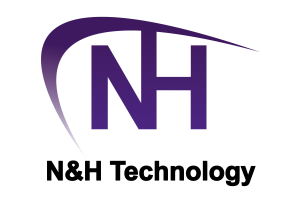Wireless Communication
5G in Industry Becomes Reality in 2020
With the new mobile communication standard 5G, even production-critical applications can be realized via radio. 5G enables new levels of flexibility, versatility and productivity. After many discussions about 5G, it is finally becoming a reality in industry, Dr. Andreas Müller of Bosch is sure.
There is hardly any other technology that recently has received as much media attention as the new mobile communication standard 5G. This is not ouf of nothing, because 5G is not more and not less than a key technology for the digital transformation of our society and economy. In fact, 5G is not only about higher data rates. Instead, it will enable ubiquitous networking in many different vertical domains of the Internet of Things.
The basis for this is an unprecedented performance and a high level of flexibility. For example, 5G can guarantee latencies in the order of 1 ms with a high degree of reliability and thus support even production-critical applications via radio. This way, new system concepts can be realized that go far beyond the replacement of a cable. For example, the control of a (mobile) robot or automated guided vehicle can be shifted to a local edge cloud using 5G in future and the control-loop can be closed over the air.
The Industry as »Killer Application« of 5G
Industrial manufacturing is generally seen as one of the most promising new application domains of 5G. The reason for that is very simple: 5G has enormous economic potential in manufacturing, which can be unlocked with relatively low investments. This is because most industrial applications do not require a nationwide 5G network, but only a local network within the factory or plant.
Accordingly, industrial applications have recently also become a focus topic of the standardization activities in 3GPP (3rd Generation Partnership Project). In particular, the next version of the standard (Release 16) will support many things that are important for industrial applications.
Apart from the transmission with high reliability and short latencies, this includes support for time-sensitive networking (TSN), for instance. With in-built TSN support, a complete 5G network can appear like a big TSN switch to the outside world. The integration into wired TSN networks thus becomes extremely simple.
Furthermore, also private 5G networks will play an increasingly important role in industry. Private 5G networks can provide highly optimized connectivity for the factory floor and are somewhat decoupled from the established public networks at the same time. This is often desired for security, autonomy and performance reasons, for example.
In this regard, recently more and more solutions are offered by the established network operators, which are specifically tailored to the needs of industrial end users. On the other hand, the German Federal Network Agency has started to issue local 5G licenses, which allow factory operators to acquire corresponding licenses themselves and thus to build their own private 5G networks.
First Installations and Challenges
In 2020, 5G will gradually become a reality. The number of test installations will increase and it is expected that first 5G-based automation components will hit the market. At the same time, however, there are still some challenges to be overcome.
This includes, for example, the establishment of suitable certification processes, but also the further development of the entire ecosystem: Now that the technical foundations have been laid, it is important to also find and develop sustainable business cases.
In the end, industrial users will only opt for 5G if a positive return on investment (ROI) can be achieved in a finite time frame. To achieve this, the market as a whole must find the optimal operating point so that it becomes an attractive business for all parties involved in the end.
5G-ACIA Drives the Development of 5G in Industry
The 5G Alliance for Connected Industries and Automation (5G-ACIA, www.5g-acia.org), which has been established in 2018 under the umbrella of the ZVEI, plays a central role in the design and development of 5G in industry. It has more than 55 members now, including leading companies from the information and communication technology sector as well as the industrial automation business. As a global alliance, 5G-ACIA helps to bring together the various stakeholders from all relevant sectors and to jointly lay the foundations for the successful deployment of 5G in the industry.
The Author

Dr. Andreas Müller
is the Head of »Communication and Network Technology« within the corporate research department of Robert Bosch GmbH in Renningen near Stuttgart. He also coordinates Bosch's activities in the context of 5G for Industry 4.0 across the different business units.
Since April 2018, he has been Chairman of the »5G Alliance for Connected Industries and Automation« (5G-ACIA). Before joining Bosch in 2011, Andreas Müller was a Research Associate at the Institute for Telecommunications at the University of Stuttgart, where he was already involved in the further development of 4G/LTE towards LTE-Advanced. He also worked as a Systems Engineer at Rohde & Schwarz in the field of military radio communications.
Andreas.Mueller21@de.bosch.com





